Alaska Jan 3 1959 Newspaper Alaska State Bird Funny


The State of Alaska
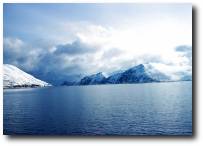
Dutch Harbor in April
Photograph: Harley D. Nygren
America's last frontier!
On March 30, 1867, the United States agreed to purchase Alaska from Russia for $7.2 million dollars, about two cents an acre; "Seward's Folly" many called it, after Secretary of State William H. Seward. A check for $7,200,000.00 was issued on August 1, 1868 and made payable to Edouard de Stoeckl, the Russian Minister to the United States.
On January 3, 1959, Alaska, with a land mass larger than Texas, California and Montana combined, became the 49th state in the union. It is a large state, 1/5 the size of all the other states together, reaching so far to the west that the International Date Line had to be bent to keep the state all in the same day. It's also the only U.S. state extending into the Eastern Hemisphere.
In Alaska, the "family car" has wings, vegetables and fruit grow to two times their normal size and moose interrupt golf games when they feel like it.
THE STATE NAME:
The name "Alaska" was used by the Russians to refer only to the peninsula. This name was used by the United States to refer, first to the entire territory, and then, to the State after its purchase in 1867.
The name "Alaska" is taken from the Aleut word "aláxsxaq" that refers to an object to which the sea is directed, in this case the Alaska peninsula and mainland. This is sometimes loosely translated as "great land."
THE STATE NICKNAMES:
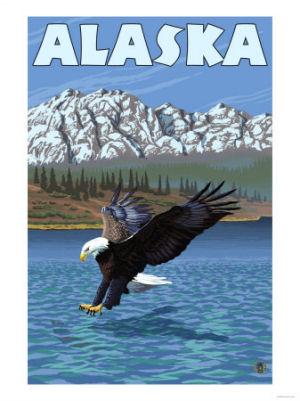
Alaska; The Last Frontier
The Last Frontier
Alaska, admitted as the 49th state to the union is thought of as "America's Last Frontier" because of its distance from the lower 48 states and because of its rugged landscape and climate. This remote and rugged perception is evidenced by the fact that only about 1/3 of the state has been organized into political units; 13 boroughs (similar to counties) are defined.
Land of the Midnight Sun
This nickname refers to Alaska's northern locations where, for a period of time, in the summer, the sun never completely dips below the horizon. The sun is visible at midnight. Parts of Alaska are bathed in 24 hours of daylight. In Barrow, the sun doesn't set for 84 days. For more information about the extremes of Alaska days and nights, visit the Alaska.Gov kid's corner.
Seward's Folly
When the agreement to purchase the Alaska territory from Russia was struck in 1867 by Secretary of State William H. Seward, there were many in the lower 48 states, who looked upon the deal with skepticism and were critical of the secrecy that had surrounded it and of the high price tag. Though Seward finalized agreement with Russia in March, it was a long and bitter battle to get final Congressional approval for the purchase and then get Congress to approve the money for the purchase. During this period, critics of Seward's agreement to purchase the Alaska territory from Russia called the plan referred to the plan as "Seward's Folly." Congress, finally relented and on October 18, 1867, in Sitka, the Imperial Russian Flag was lowered and the Stars and Stripes was raised.
Seward's Ice Box
The is another derisive name given to the Alaska territory during the battle between Secretary of State William H. Seward and the United States Congress over the purchase of the land from Russia. Other satirical names were "Icebergia," "Polaria," and "Walrussia." Critics of the purchase also chastised the President of the United State, Andrew Johnson, by referring to the Alaska territory as "Johnson's Polar Bear Garden."
THE STATE QUARTER:
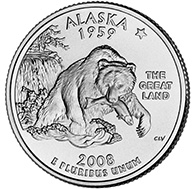
United States Mint Image
The fourth quarter released by the United States Mint in 2008 commemorates the State of Alaska. It is the 49th coin to be issued in the Mint's 50 State Quarters® Program. On January 3, 1959, Alaska became the 49th state to be admitted into the Union. The reverse of the Alaska quarter features a grizzly bear emerging from the waters clutching a salmon in its jaw. The coin's design includes the North Star displayed above the inscription "The Great Land" and the inscriptions "Alaska" and "1959."
The grizzly bear and salmon symbolize Alaska's natural beauty and abundant wildlife, with the bear representing strength and the salmon representing the nutrition that provides for this strength. The grizzly flourishes in Alaska and can be observed in places such as Denali and Katmai National Parks, Kodiak Island and Admiralty Island. More than 98 percent of the United States' grizzly population is found in Alaska.
The word Alaska comes from the Aleutian word "Alyeska," meaning "The Great Land." Populated by Indians, Eskimos, and Aleuts for centuries, Alaska was not explored by Europeans until 1741. Russia established a colony in Alaska to protect its lucrative fur-trading interests, but sold Alaska to the United States in 1867 for $7.2 million, or two cents per acre, when it could no longer afford to maintain the colony. Although the purchase was derided by many in the United States at the time, its worth became apparent following late 19th century gold rushes and the discovery of oil in the mid-20th century.
The 11-member Alaska Commemorative Coin Commission, appointed by former Governor Frank Murkowski, invited Alaskans to submit design ideas for the Alaska quarter. From the 850-plus submissions, four concepts were forwarded to the United States Mint for consideration. These concepts were developed into design candidates by the United States Mint's Sculptor-Engravers and artists in its Artistic Infusion Program. On April 26, 2007, Governor Sarah Palin announced her selection of the grizzly bear and salmon design following a statewide comment period.
The Department of the Treasury approved the design on May 25, 2007. The other designs considered include "Polar Bear," featuring a polar bear with the inscription "Land of the Midnight Sun;" "Dog Musher with Denali (Mt. McKinley)," featuring a dog musher, Denali, and the Big Dipper; and "Gold Panner with Denali," depicting a gold panner with Denali in the background.
For more about the state commemorative quarters, visit this page.
This 50 State Quarter Map is a great way to collect and display all 50 State Quarters.
Sources...
Carpenter, Allan & Provose, Carl. The World Almanac® of the U.S.A.. World Almanac Books (An Imprint of K-III Reference Corporation, A K-III Communications Company). Mahwah, N.J., 1996.
Shankle, George Earlie. State Names, Flags, Seals, Songs, Birds, Flowers, and Other Symbols. Irvine, Calif.: Reprint Services Corp, Revised edition, 1971.
Shearer, Benjamin F. and Barbara S. State Names, Seals, Flags and Symbols: A Historical Guide Third Edition, Revised and Expanded. Westport, Conn: Greenwood Press, 3 Sub edition, 2001.
Additional information
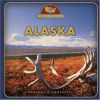
Alaska
Barbara A. Somervill
Alaska (From Sea to Shining Sea), by Barbara A. Somervill. 80 pages. Publisher: Scholastic Library Publishing (March 2002) Reading level: Grades 3-5. Presents information about Alaska's people, geography, history, landmarks, natural resources, government, state capitol, towns and cities, and more.
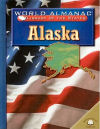
Alaska
by Isaac Seder
Alaska (World Almanac Library of the States), by Isaac Seder. 48 pages. Publisher: Gareth Stevens Publishing (February 2003) Reading level: Ages 9-12. Filled with the most up-to-date information, including the latest Census results. Full-color photos bring to life the story of Alaska. In addition to an in-depth factual profile of Alaska in the form of a state Almanac, this book offers fascinating and lively discussions of the state's history, people, geography, government, economy, culture, and lifestyles. A section on Notable People, a calendar of events, and enough primary source documents, time lines, maps, and other tools to make this unquestionably the best young adult reference material on the USA available anywhere.
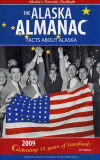
The Alaska Almanac
The Alaska Almanac: Facts about Alaska, edited by Nancy Gates. 256 pages. Alaska Northwest Books; 32nd edition (November 1, 2008) Completely updated and redesigned edition of the perennial bestseller. The Alaska Almanac is an indispensable reference for those who are traveling to the north or those who already know and love it but want to impress others with their encyclopedic knowledge of Alaska's fascinating past and present. 2009 marks the 50th anniversary of Alaskan statehood along with the 50th anniversary of Alaska Northwest Books. This edition features factoids and nuggets about statehood as well as facts and figures on geography, history, economics, sports, cultures and people of the Last Frontier. Humorous blurbs and pointed commentary from Mr. Whitekey's geared to statehood will be included. There is no better reference than the Alaska Almanac for those who want to really "know" Alaska.

Alaska: A Photographic Excursion - 2nd Edition, Alaskan photographer Mark Kelley and author Nick Jans capture the essence of Alaska in this award-winning photo book. A beautiful Alaskan memory for those who have been here, an inspiration for those wanting to travel here, and a great journey for those who might not venture here in person. Travel through the coastal rainforest, the fishing towns and ice fields of Southeast Alaska; the glacier-carved landscape of Prince William Sound and Kenai Fjords; through the major cities of Anchorage and Fairbanks; and on to the crown jewel, Denali National Park. New Second Edition - with over forty new

Source: https://www.netstate.com/states/intro/ak_intro.htm